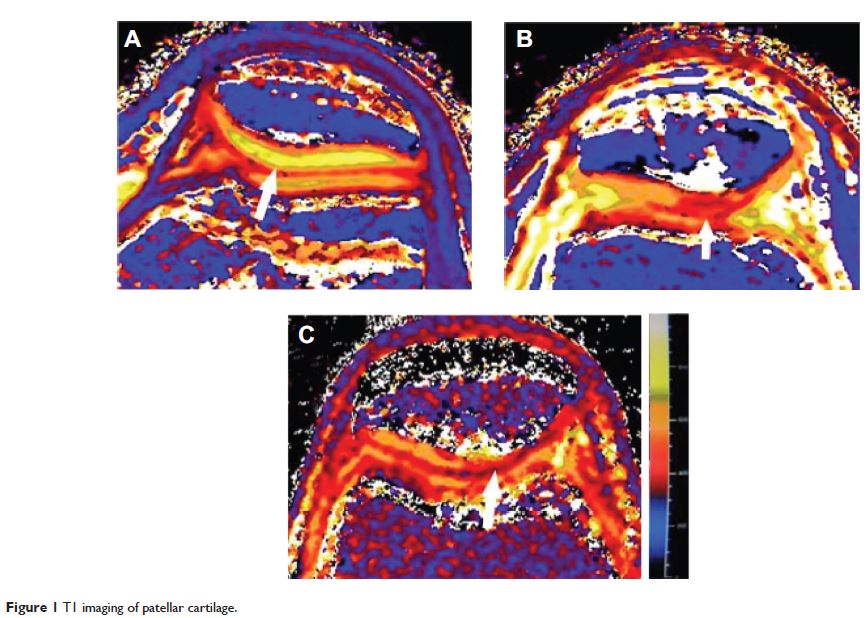108552
论文已发表
注册即可获取德孚的最新动态
IF 收录期刊
- 3.4 Breast Cancer (Dove Med Press)
- 3.2 Clin Epidemiol
- 2.6 Cancer Manag Res
- 2.9 Infect Drug Resist
- 3.7 Clin Interv Aging
- 5.1 Drug Des Dev Ther
- 3.1 Int J Chronic Obstr
- 6.6 Int J Nanomed
- 2.6 Int J Women's Health
- 2.9 Neuropsych Dis Treat
- 2.8 OncoTargets Ther
- 2.0 Patient Prefer Adher
- 2.2 Ther Clin Risk Manag
- 2.5 J Pain Res
- 3.0 Diabet Metab Synd Ob
- 3.2 Psychol Res Behav Ma
- 3.4 Nat Sci Sleep
- 1.8 Pharmgenomics Pers Med
- 2.0 Risk Manag Healthc Policy
- 4.1 J Inflamm Res
- 2.0 Int J Gen Med
- 3.4 J Hepatocell Carcinoma
- 3.0 J Asthma Allergy
- 2.2 Clin Cosmet Investig Dermatol
- 2.4 J Multidiscip Healthc

已发表论文
对早期髌骨软骨骨关节炎 3.0 T 进行的定量与非定量相结合的评估
Authors Zuo HD, Yao WW, Qu N, Yang SX, Wang JH, Cui XJ
Published Date July 2014 Volume 2014:9 Pages 1133—1143
DOI http://dx.doi.org/10.2147/CIA.S65871
Received 10 April 2014, Accepted 12 May 2014, Published 16 July 2014
Purpose: To evaluate quantitative T1 and T2 relaxation times and magnetization transfer ratios (MTRs) in the early diagnosis of patellar cartilage osteoarthritis (OA) and to quantify and possibly refine the current Kellgren-Lawrence score criteria.
Materials and methods: A total of 92 cases of knee joints with 40 normal volunteers and 30 patients with OA were prospectively evaluated. The knee joints with OA were divided into mild and moderate groups according to the Kellgren-Lawrence score criteria. The discriminative analysis method was used to analyze the accuracy of the original grouped cases correctly classified by age, sex, T1 relaxation times, T2 relaxation times, and MTR values. Linear regression analysis was used between T1 relaxation time, T2 relaxation time, and MTR values.
Results: The mean T1 relaxation times decreased with the severity of OA, and a significant difference was only found between the normal and moderate OA groups (P <0.05). The mean T2 relaxation times increased, and significant differences were found between the normal and mild OA groups and the normal and moderate OA groups (P <0.001). The MTR values were 35.8%±4.2%, 36.1%±3.2%, and 35.4%±3.8%, respectively. There were no significant differences between the normal and OA groups. In addition, T1 relaxation times were positively correlated with MTR values (P <0.01). A discriminative analysis using a synthesis of all the influential factors indicated a high accuracy rate (93.9%) for the correct classification of the original grouped cases.
Conclusion: Quantitative T1 and T2 relaxation times were useful in the diagnosis of early OA; T2 relaxation times were more relatively sensitive. The functional usefulness of MTR values may be limited. T1 relaxation times positively correlated with MTR values. Multiple quantitative parameters, combined with some relative nonquantitative clinical parameters and Kellgren-Lawrence scores, may be useful in the early stage of OA and provide better information for clinical treatment and follow-up.
Keywords: osteoarthritis, patellar cartilage, magnetic resonance imaging, T1 relaxation time, T2 relaxation time, MTR, age, sex
Materials and methods: A total of 92 cases of knee joints with 40 normal volunteers and 30 patients with OA were prospectively evaluated. The knee joints with OA were divided into mild and moderate groups according to the Kellgren-Lawrence score criteria. The discriminative analysis method was used to analyze the accuracy of the original grouped cases correctly classified by age, sex, T1 relaxation times, T2 relaxation times, and MTR values. Linear regression analysis was used between T1 relaxation time, T2 relaxation time, and MTR values.
Results: The mean T1 relaxation times decreased with the severity of OA, and a significant difference was only found between the normal and moderate OA groups (P <0.05). The mean T2 relaxation times increased, and significant differences were found between the normal and mild OA groups and the normal and moderate OA groups (P <0.001). The MTR values were 35.8%±4.2%, 36.1%±3.2%, and 35.4%±3.8%, respectively. There were no significant differences between the normal and OA groups. In addition, T1 relaxation times were positively correlated with MTR values (P <0.01). A discriminative analysis using a synthesis of all the influential factors indicated a high accuracy rate (93.9%) for the correct classification of the original grouped cases.
Conclusion: Quantitative T1 and T2 relaxation times were useful in the diagnosis of early OA; T2 relaxation times were more relatively sensitive. The functional usefulness of MTR values may be limited. T1 relaxation times positively correlated with MTR values. Multiple quantitative parameters, combined with some relative nonquantitative clinical parameters and Kellgren-Lawrence scores, may be useful in the early stage of OA and provide better information for clinical treatment and follow-up.
Keywords: osteoarthritis, patellar cartilage, magnetic resonance imaging, T1 relaxation time, T2 relaxation time, MTR, age, sex
